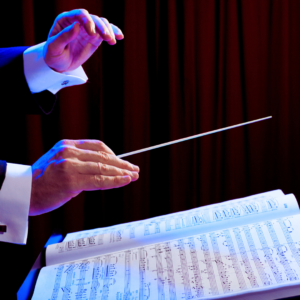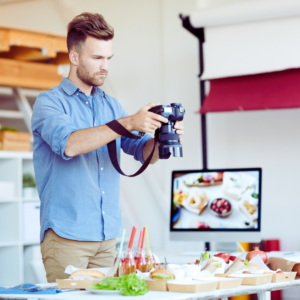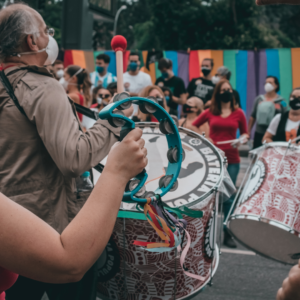Building a strong online presence is essential for musicians looking to promote their music effectively. Using social media platforms strategically allows artists to engage with fans, share their music, and expand their reach within the music industry. By leveraging tools and techniques suitable for each platform, musicians can create authentic connections and increase their visibility.
Engaging content is key to capturing attention. Artists should share not only their music but also behind-the-scenes insights, personal stories, and interactive content that invites fan participation. This approach fosters a community around their brand and can lead to organic growth in followers while encouraging fans to share their work.
Understanding the unique aspects of different platforms can enhance promotional efforts. Each social media site offers distinct features and audiences. Tailoring content to fit these specific attributes can result in higher engagement rates and better results in their music promotion initiatives.
Crafting Your Social Media Strategy
A well-defined strategy is essential for promoting music on social media. This involves identifying the target audience, setting specific objectives, and selecting appropriate platforms to maximize reach and engagement.
Identifying Your Target Audience
Understanding who the audience is will inform all promotional efforts. By defining characteristics such as age, location, and musical preferences, an artist can tailor content effectively.
Key aspects to consider:
- Demographics: Identify the age group that resonates with the music.
- Interests: Analyze what other genres or artists the audience follows.
- Behavior: Observe how they interact on social media, such as preferred platforms and types of content.
Once the target audience is identified, the messaging and content style can be aligned to resonate with that group.
Setting Clear Objectives
Objectives guide promotional efforts and measure success. Setting clear, achievable goals is crucial for tracking progress over time.
Common objectives include:
- Increasing Followers: Aim for a specific number of followers by a set date.
- Engagement Rates: Target a percentage of likes, shares, or comments on posts.
- Streaming Goals: Set a target for the number of streams on popular platforms.
Articulating these objectives helps an artist stay focused and adjust tactics as necessary.
Choosing the Right Platforms
Selecting the appropriate social media platforms is key to reaching the target audience effectively. Not all platforms are equal in terms of engagement and user demographics.
Recommendations for platforms:
- Instagram: Excellent for sharing visuals and short videos.
- TikTok: Ideal for engaging younger audiences with creative content.
- Facebook: Useful for detailed posts and event promotion.
Each platform has unique features that can enhance music promotion. It’s essential to tailor content for each, ensuring maximum impact across the selected channels.
Creating Engaging Content
Engaging content is crucial for artists looking to connect with their audience on social media. By utilizing a mix of formats and insights into their creative process, artists can foster a loyal following and enhance their visibility in a crowded market.
Leveraging Video and Reels
Video content is a powerful tool for promoting music. Platforms like Instagram Reels, TikTok, and YouTube Shorts provide opportunities for artists to share snippets of performances, behind-the-scenes footage, or new releases.
Tips for effective video content:
- Keep videos short and focused, ideally under 60 seconds.
- Use eye-catching visuals and sound to grab attention quickly.
- Incorporate trending sounds and challenges to increase discoverability.
Live performances or in-studio recordings can also resonate well with followers. These glimpses can create excitement around new releases and cultivate a deeper connection with the audience.
Behind-the-Scenes Insight
Sharing behind-the-scenes content can humanize the artist and make the audience feel more involved. Audiences appreciate seeing the process behind music production, rehearsals, and songwriting.
Ideas for behind-the-scenes content:
- Document studio sessions to showcase the creative process.
- Share anecdotes or challenges faced during production.
- Use Instagram Stories or Facebook Live to interact in real time.
This content not only boosts engagement but also builds a narrative around the artist’s journey. Regular updates can keep followers invested and informed about upcoming projects.
Collaborating with Other Artists
Collaboration with other artists can introduce them to new audiences. Joint projects, live streams, or shoutouts can expand reach and provide additional content sources.
Collaborative strategies include:
- Hosting live performances featuring multiple artists.
- Creating duet challenges on platforms like TikTok or Instagram.
- Cross-promoting music releases through each other’s channels.
Collaborations can enhance creativity and provide fresh perspectives. They can also result in shared content that fosters connection across different fan bases. Engaging with other creatives keeps content dynamic and varied.
Building a Strong Community
Creating an engaged community around music can significantly enhance an artist’s presence on social media. Interactions with fans, live streaming events, and utilizing support platforms contribute to fostering this sense of community.
Interacting with Your Fanbase
Engagement is key in building a strong community. Artists should prioritize responding to comments, liking posts, and sharing fan-generated content on platforms like Instagram.
Tips for interaction:
- Personal Replies: Acknowledge fans by replying directly to their comments.
- Q&A Sessions: Host regular Q&A sessions to create a direct line of communication.
- Polls and Feedback: Use polls to gather opinions on music choices or content ideas.
Regular interactions make fans feel valued and increase their commitment to the artist.
Using Live Streaming to Your Advantage
Live streaming offers a unique opportunity for real-time connection. Artists can perform, host behind-the-scenes sessions, or simply chat with fans.
Platforms like Instagram Live or Twitch allow for direct interaction. Fans can comment and ask questions during sessions, creating a dynamic experience.
Live streaming benefits:
- Immediate Feedback: Artists receive real-time reactions to new material.
- Exclusive Content: Fans appreciate exclusive performances that feel personal.
- Community Building: Group chats create a shared experience and a sense of belonging.
Regular live streaming sessions can solidify a loyal fan base.
Utilizing Fan Support Platforms
Fan support platforms like Patreon allow artists to monetize their content and offer exclusive perks. This can range from behind-the-scenes content to private concerts.
By encouraging fan subscriptions, artists cultivate deeper connections.
Key aspects of fan support platforms:
- Tiered Memberships: Offer various subscription levels for different benefits.
- Exclusive Content: Provide unique content aimed at committed fans.
- Community Interaction: Foster discussion forums for fans to interact with each other and the artist.
Utilizing these platforms helps sustain a financially supportive community while deepening fan engagement.
Measuring Success and Adapting
Tracking progress in music promotion on social media involves assessing performance metrics and making necessary adjustments. Effective evaluation allows independent artists to enhance their online presence and engagement with their audience.
Analyzing Social Media Metrics
To measure success, artists should focus on key metrics across platforms like Spotify, SoundCloud, and social media channels. Important metrics include:
- Engagement Rate: Likes, shares, comments, and mentions indicate audience interaction.
- Follower Growth: Increasing followers signifies rising interest in the artist’s work.
- Streaming Numbers: Observing song plays and playlists on Spotify and SoundCloud reflects popularity.
Regular analysis of these metrics helps identify what resonates with listeners. Artists can utilize these insights to refine content strategies and boost overall engagement.
Adjusting Your Approach
Artists must remain flexible and willing to change strategies based on performance data. If engagement drops, it could indicate a need for new content or different types of interactions. Consider these adjustments:
- Content Variation: Experiment with formats such as videos, live sessions, or behind-the-scenes posts.
- Posting Schedule: Test different times and frequencies to find optimal engagement periods.
Listening to audience feedback is crucial. Artists can ask for input through polls or comments, directly involving their audience and adapting content to meet their expectations.
Understanding Analytics Tools
Many platforms provide analytics tools that facilitate performance evaluation. Spotify for Artists offers insights into listener demographics and streaming behavior. Similarly, SoundCloud provides detailed stats about tracks.
Popular social media platforms feature built-in analytics:
- Instagram Insights: Tracks followers, reach, and interactions.
- Facebook Analytics: Provides data on post engagement and audience demographics.
Using these tools effectively enables artists to analyze relevant data. They can focus on specific numbers that correlate with engagement strategies, leading to targeted improvements and better overall results.





